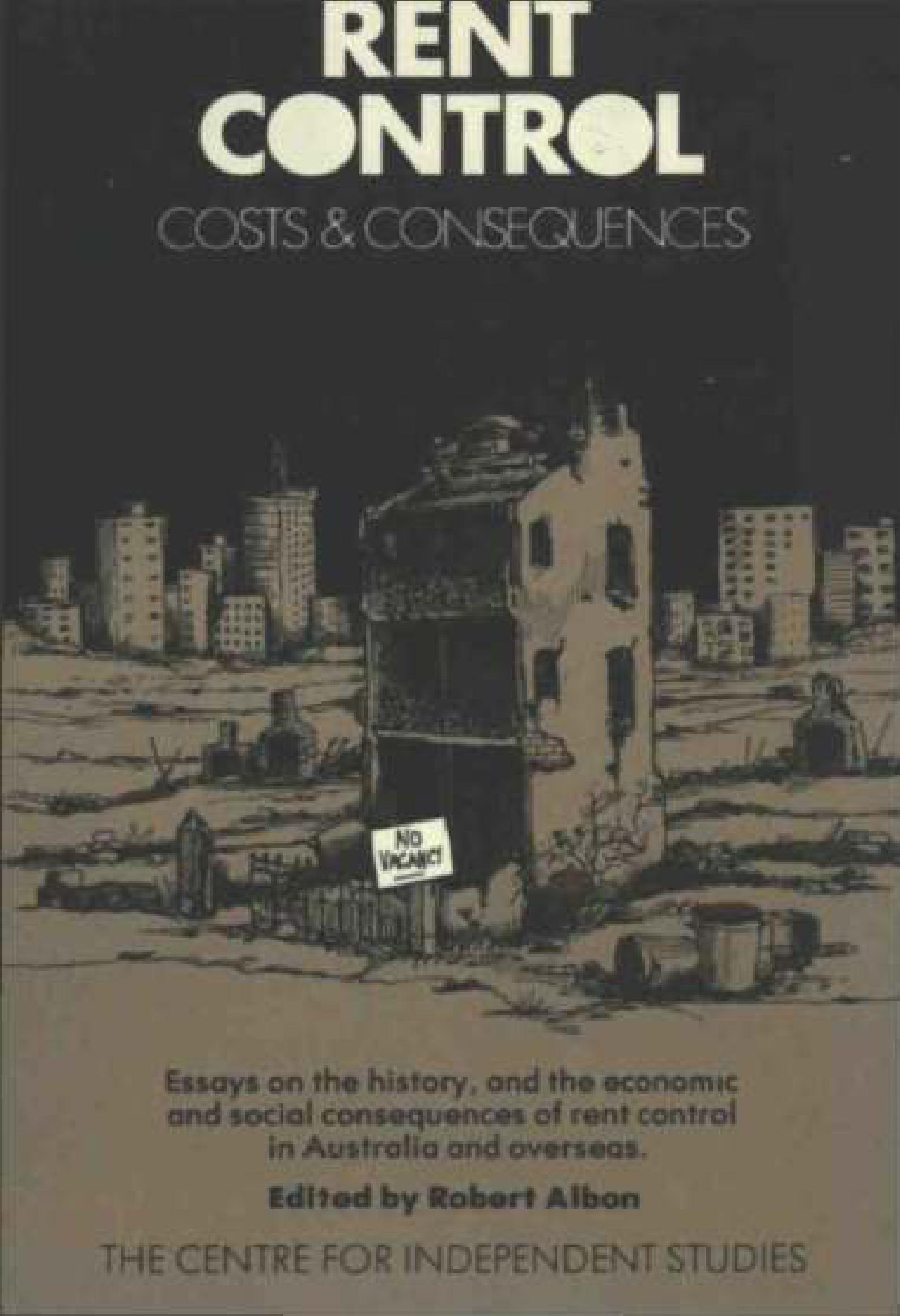
Most of the essays in Rent Control: Costs & Consequences have been written especially for the book, but some have been published previously — the earliest in 1923. Most of the republished material is no longer readily available in its original form, and all is of historical and analytical interest. Australian writings and experience are emphasised in the book, but there are four contributions dealing with the consequences of rent control in other countries. The perspectives of the historian and political scientist are represented, as well as that of the economist. Rent control is simply price control on a specific commodity. That rented housing should be singled out for special treatment is explicable mainly in terms of political expediency. Most evidence shows rent control to be a retrograde policy — yet it persists. In modern times, and near-universally by the economics profession, rent control stands condemned.
Australia’s experience with rent control goes back at least to the First World War. The article by H.V. Evatt deals with rent control in New South Wales in that period and is included here for historical reasons. Many readers will remember the rent controls imposed during the Second World War: one does not have to have been a landlord or tenant during the war to have been affected by these regulations for they were retained for many years afterwards — and indeed, pockets of control still linger on in some states. Australian experience exemplifies the truth that any society that implements effective rent control takes a tiger by the tail. The more controlled rents get out of line with market rents — which generally depends on how long the controls are in force — the more difficult it is to remove the controls, for the greater is the loss suffered by the tenants as a result of decontrol — and tenants have more votes than landlords. At the same time, the longer controls are in force, the more apparent become their inequities, inefficiencies, and absurdities. In favourable circumstances pressure for decontrol can avail against the interests of protected tenants.
Having — at varying paces and in varying degrees in the different states — put the era of rent control behind us, one would have thought that the lesson has been learnt: that memories of of vain searches for housing, living unwillingly with parents, of paying key money, of being locked into a controlled tenancy, of the manifest inequities among landlords, protected tenants, unprotected tenants, and would-be tenants — all of these things, and more, would ensure that rent control remained a dead letter. But memories are short.
This book will serve to remind older readers, and inform younger ones, of what rent control is really like, as well as to explain why it works the way it does.










